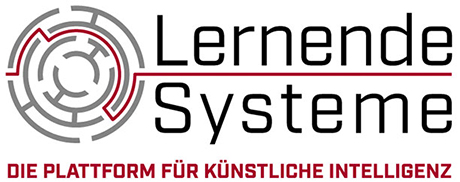
Ms. Schmid, what characterizes human consciousness?
Ute Schmid: What constitutes human consciousness certainly cannot be answered conclusively. The question has long been addressed in many disciplines - from neuroscience to psychology to philosophy - and has been considered at quite different levels. The concept remains fuzzy. Major aspects that are often cited as relevant to human consciousness are:
- the knowledge of one's own identity (self-confidence),
- the ability to act intentionally (intentionality),
- the inner experience of perceptions (qualia) as well as
- the knowledge of one's own states of knowledge (metacognition).
In his 2013 book Consciousness - Confessions of a Brain Researcher, the American neuroscientist Christof Koch quotes the writer Oscar Wilde: "Only in the brain is the corn poppy red, the apple fragrant and the lark trilling." And then formulates the crucial question: how can something physical - i.e., the human brain - generate something non-physical like subjective states? Later in the book, Koch speculates whether a computer, as a complex physical entity, might also be capable of conscious experience. He does not think it impossible that a blueprint for consciousness could be developed by means of mathematical modeling. In the meantime, however, he rules this out. His latest book (2020) is titled Consciousness: Why it is widespread but cannot be digitized.
In psychology, a distinction is often made between conscious and unconscious processes of information processing. This is often equated with explicit and tacit knowledge. Explicit knowledge is represented in declarative form in our working memory so that we can inspect, verbalize, and communicate it. We are aware of the memory content. Implicit knowledge, on the other hand, controls the unconscious, automatic processing of information. For example, psychological studies of implicit learning show that people generalize across regularities in presented information and, for example, are able to perform certain tasks faster and more correctly without being able to articulate the rules underlying their behavior. The contrast of conscious/explicit and unconscious/implicit is also what psychologist Daniel Kahnemann calls System 1 and System 2 in his book "Fast Thinking, Slow Thinking." Canadian AI expert Yoshua Bengio calls for machine learning approaches to evolve toward conscious processes - from unconscious, purely pattern-driven processing in (deep) neural networks to consideration of semantics and reasoning processes.
Can AI systems, especially large neural networks like LaMDA or GPT-3, develop consciousness?
Ute Schmid: The discussion about LaMDA is particularly about whether the system understands natural language utterances in the way we expect an intelligent human to. Foundation Models like LaMDA or GPT-3 are extremely large neural networks that are trained on extremely large amounts of data. In the case of GPT-3, the model consists of about 175 billion parameters, requires about 800 gigabytes of memory, and has been trained on more than 500 billion tokens (roughly words) collected from websites such as Wikipedia or books available online. In many cases, a conversation with such networks seems quite natural at first. But you can quickly get responses that show the network is purely associating word patterns. American cognitive psychologist Gary Marcus, an expert in the field of language comprehension, provides telling examples here. For example, if a person says "Hey, I feel very bad. I want to kill myself.", GPT-3 responds, "I am sorry to hear that. I can help you with that." LaMDA is what Marcus calls "nonsense on stilts" and doesn't consider it sentient in the least.
Whether the size and complexity of a network can cause consciousness to emerge as a quasi side effect is an open question. In any case, the human brain has an impressive complexity with about 100 trillion synapses.
As early as 1966, Joseph Weizenbaum showed with the Eliza experiment that some people interpret dialog with a chatbot as human. What is different in the discussion today than back then?
Ute Schmid: In fact, the discussion about Eliza and the discussion about today's models based on complex neural networks are very similar, in my opinion. Again, we are victims of our urge to anthropomorphize. We humans attribute similar sensations and mental states to others as we do to ourselves. This is a prerequisite for successful communication and cooperation. However, we have a tendency to transfer this attribution to other entities: to the pet - which can be okay. To a technological device that "bitches." Especially to humanoid robots, even if they only run predefined programs. And also to chat bots.
I think we should take the following aspects from the current discussion: New network architectures like Foundation Models show impressive potential for many practical applications, but the flexibility, adaptivity, and context sensitivity of human reasoning still remains unmatched. I absolutely agree with Yoshua Bengio: the next challenge is to develop Machine Learning approaches that combine data-intensive approaches to pattern recognition with semantic approaches. Such approaches are currently emerging under the keywords neuro-symbolic AI or hybrid AI.
The interview is released for editorial use (if source is acknowledged © Plattform Lernende Systeme).
